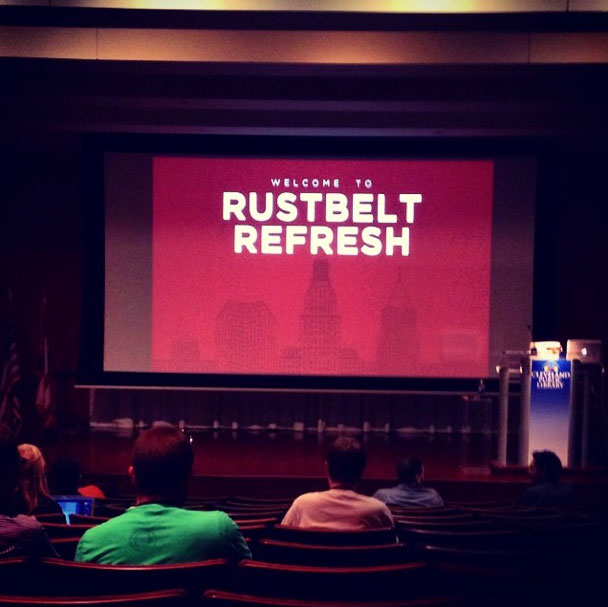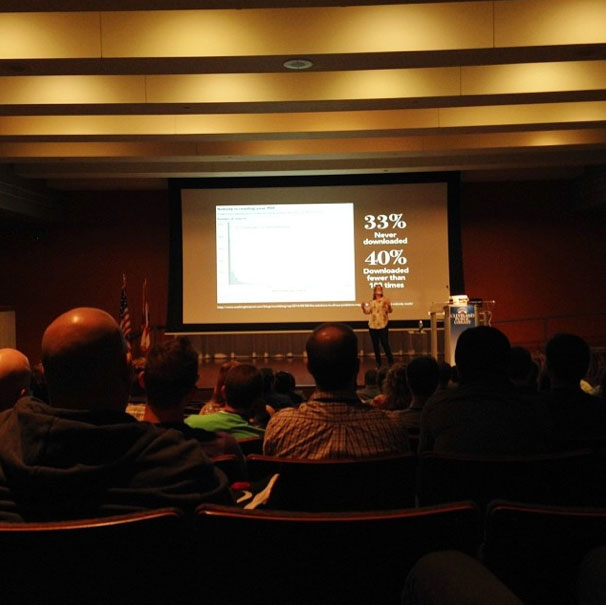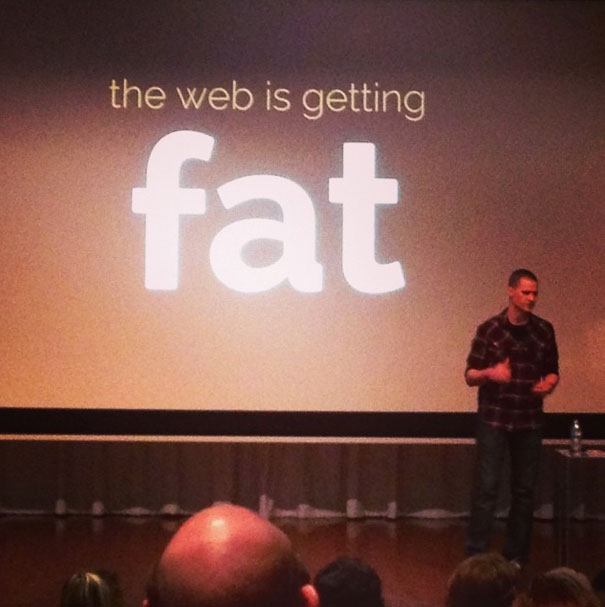
So June 6th the Luminus Media team traveled to good old Cleveland, OH in search of some inspiration, motivation, and insight into the outside world. It truly is “refreshing” to hear about what other people are doing outside of the project bubble of your own studio.
So I just wanted to summarize and note what I took away from a few of the speakers. How I see it helping us grow and better the services and interactions we have with our clients in our workflow.
THE SITE IS MORE THAN THE SITE ITSELF

Karen McGrane (@karenmcgrane) and Matt Griffin (@elefontpress) touched on separate but aligned topics that I related back to how we approach our website projects as a whole.
Karen emphasized the importance of the content itself, which I think triggered a light bulb in all of us, we sometimes stray from the content to make a design that looks good. From my perspective as the programmer, this affects how a website ends up on my doorstep. In the past we’ve asked for general topics to formulate the site map and content structure without the specifics of the content. This has worked on most occasions, but once in a while we’ll end up seeing a page under perform (in terms of content delivery) because we over estimated the amount / type of / direction of how the content would be directed. This affects the amount of fields, types of fields, and field control I offer in our Panel as well as the wire frame layout.
I related very closely to what Matt brought to the table. His company Bearded (http://www.bearded.com) is around the same age as Luminus Media and currently has generally the same staff / company size as we do. He addressed content from a workflow angle that really struck me. They require client content before a project even begins. I thought about how useful that idea was and it made so much sense. In theory, if we had nearly finalized client content before the project even began, I could prepare the database and Panel alongside the design and coding phases. At the very least, think ahead about it. I’ll let the design crew at Luminus post about how it would benefit their design processes, but in terms of data management it could be incredibly beneficial to think that way.
Simply put, “Content Comes First” and it affects all aspects of the production process.
THE WEB IS GETTING FAT AND ITS UP TO US TO SLIM IT DOWN

Tim Kadlec (@tkadlec), in addition to having an awesome name, brought up something I think about a lot actually, website bloat. There was once a time when websites we all responsive and loaded incredibly fast [Jeremy Keith (@adactio) loves this point] and that was when the first web page was ever viewed. No custom style and just plain title tags / data lists / links / paragraphs.
In a way, we’ve bastardized the web by making it so cool. Now this doesn’t mean websites should just be text. What Tim was getting at was the amount of plugins, scripts, fonts, etc that we load into websites driving up the file size and load time.
Don’t tell me you haven’t been on a website and had a page load just slightly slower than normal and gotten frustrated. We’ve all been there.
There’s an argument to be made that Content Management Systems are at fault, but its more about the developer. A custom site, WordPress site, any site pulls in font files, images, scripts. It’s up to the developer to make sure the page is only using what it needs and loads quickly.
There is also some responsibility in educating clients who use website panels with image uploading capabilities how to optimize and/or use the panel to use images that are not 5MB raw files directly off of their cameras.
He used an example I think a lot of business owners can relate to that really hits home. Amazon did a test study. They sell $1,500,000 in a given period of time (I think it was per day). For that period of time they decreased page load time by .1 seconds and in that time they saw a 1% increase in sales. That’s a $150,000 difference. Now multiply that by 365 days and you’ve lost that amount of sales by allowing pages to load slowly.
That example really drives home the point that us as developers should consider that we might not need every font loaded, a dozen javascript effects, and 50 images on a page. Consider the end goal that you are trying to convert a lead or a sale. Get the user information fast and to the point. Find ways to make it pretty and exciting without making the website slow as a turtle.
In the next few weeks we’re going to be tweaking our workflow to better prepare and execute projects. I plan on taking these particular approaches and addressing how they affect my data management and programming setups.
Rustbelt Refresh (http://rustbeltrefresh.com) was awesome and I recommend it to anyone looking for some smart / new thinking speakers to listen to and chat with.
